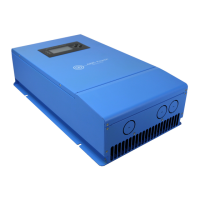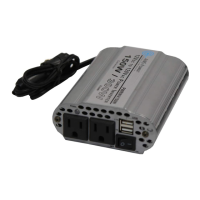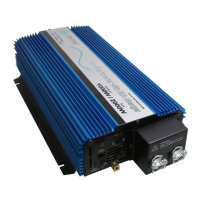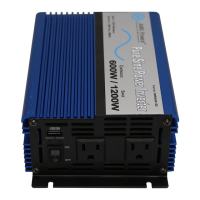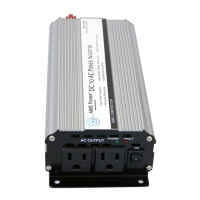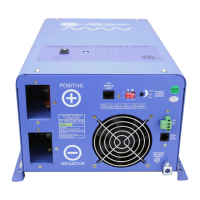4. Operation
The MPPT controller is fully automatic. After installation is completed, there are few
operator tasks to perform. However, the operator should be familiar with the operation
and care of the controller as described in this section.
4.1 The MPPT controller utilizes Solar Maximum Power Point Technology
Tracking (MPPT) technology to extract maximum power from the solar array. The
tracking algorithm is fully automatic and does not require user adjustment. MPPT
technology tracks the array maximum power point as it varies with weather conditions,
ensuring that maximum power is harvested from the array throughout the course of
the day.
4.2 Current Boost
Under most conditions, MPPT technology will “boost” the solar charge current. For
example, a system may have 36 Amps of solar current flowing into the controller
and 44 Amps of charge current flowing out to the battery. The controller does not
create current! Rest assured that the power into the controller is the same as the
power out of the controller. Since power is the product of voltage and current (Volts
x Amps), the following is true*:
(1) Power into the MPPT 150V = Power Out of the MPPT 150V
(2) Volts In x Amps In = Volts Out x Amps Out
* Assuming 100% efficiency. Losses in wiring and conversion exist.
If the solar module’s maximum power voltage (V
mp
) is greater than the battery
voltage, it follows that the battery current must be proportionally greater than the
solar input current so that input and output power are balanced. The greater the
difference between the V
mp
and battery voltage, the greater the current boost.
Current boost can be substantial in systems where the solar array is of a higher
nominal voltage than the battery as described in the next section.
4.3 Battery Charging Information
The MPPT controller has 4-stage battery charging algorithm for rapid, efficient,
and safe battery charging. Figure 4-1 shows the sequence of the stages.
Figure4-1. MPPT Controller Charging Algorithm
